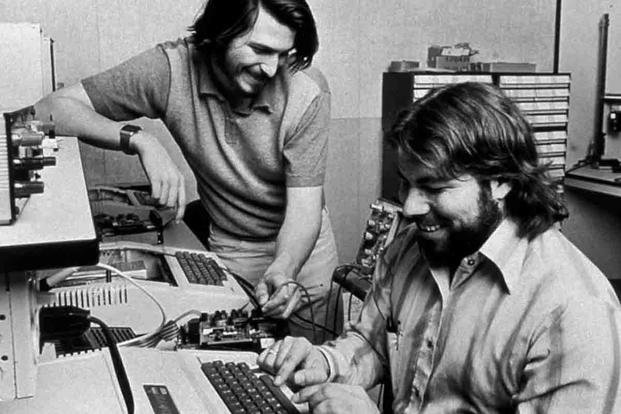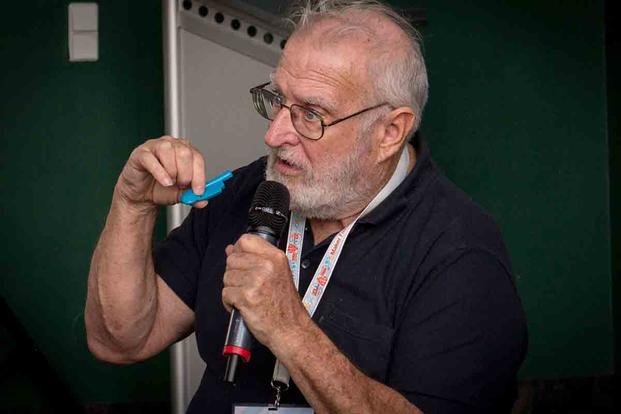In the late 1950s, a young, blind boy named Joe Engressia had little to do during his waking hours, but one of the things he could reliably play with in his house was the telephone.
Having excellent hearing and perfect pitch — the ability to recreate any musical note without hearing it first — Engressia began experimenting with his home’s landline phone at age 7. After years of tinkering, he eventually discovered that he could make free long-distance calls after whistling a specific note into the phone’s handset.
Engressia’s discovery eventually led to a technological component (because not everyone has perfect pitch) and a massive underground explosion in what became known as phone “phreaking,” or the use of artificial tones to manipulate phone systems. It also led one of the phreakers, Airman 1st Class John Draper, to become a counterculture entrepreneur who inspired one of America’s most valuable companies: Apple.

Engressia would spend his college years at the University of South Florida in the late 1960s, where he put his discovery to good use to earn extra cash. His fellow students would pay him a dollar, and he’d whistle the tone into the phone so they could make a free long-distance call. Back then, a five-minute call could cost upward of $25 (more than $220 in today’s dollars), so it was a pretty good deal for everyone involved.
The trick was remarkably simple. After World War II, human switchboard operators were gradually replaced with multi-frequency signaling, which used audible tones to control telephone switches. If you could play the correct frequency tones, you could control the phone system. While Engressia could do it by whistling on command, other “phreakers” needed technological help, but no matter how they made the sound, emitting a tone or combination of tones let them use the phones for free.
John Draper was a tinkerer from a young age; the son of an Air Force engineer, he was able to build radios and the like from old spare parts. He followed in his father’s footsteps and joined the Air Force himself, where he worked with electronics. There, he also learned how to access local switchboards to make calls for free and even started a pirate radio station. He was discharged in 1968 and moved to Cupertino, California.
By this time, phone phreakers were in regular communication with each other, sharing information over the same phone lines they were hacking. One day, Draper was testing another pirate radio signal by broadcasting a number for people to call. The phreakers got through to him and asked for his assistance.
They’d discovered that the bosun’s whistle toy that came in boxes of Cap’n Crunch cereal at the time could play the exact note needed to commandeer a phone line. The popularity of the toys skyrocketed, but they needed more. Draper’s engineering ability allowed him to create a device that could create all the tones necessary to not only use phone lines, but route through entire phone systems. He called it the “Blue Box” and renamed himself “Captain Crunch.” Using his devices, phreakers were allegedly able to reach President Richard Nixon at the White House, the pope in the Vatican and even pose as the National Guard to falsely tell callers a nuclear accident had wiped out Santa Barbara.

In 1971, Esquire Magazine published an article about phreaking that caught the attention of two college students who formed their first business together making blue boxes: Steve Jobs and Steve Wozniak. The two later stated that their first venture with the blue boxes was part of their decision to start Apple Computer in 1976.
Draper, who would serve jail time for his phreaking activities in the 1970s, would eventually go to work for Apple, creating phone technology that would lead to voice-activated telephone menus and an early word-processing program for the Apple II.
Draper has since started a number of business ventures with pioneering technology, but failed to reach any kind of commercial success. He’s still a legend in the world of computer programming and among hackers — and without his work, the American business juggernaut known as Apple might not exist in the same form today.
— Blake Stilwell can be reached at [email protected]. He can also be found on Facebook, X or LinkedIn.
Want to Learn More About Military Life?
Whether you’re thinking of joining the military, looking for post-military careers or keeping up with military life and benefits, Military.com has you covered. Subscribe to Military.com to have military news, updates and resources delivered directly to your inbox.






